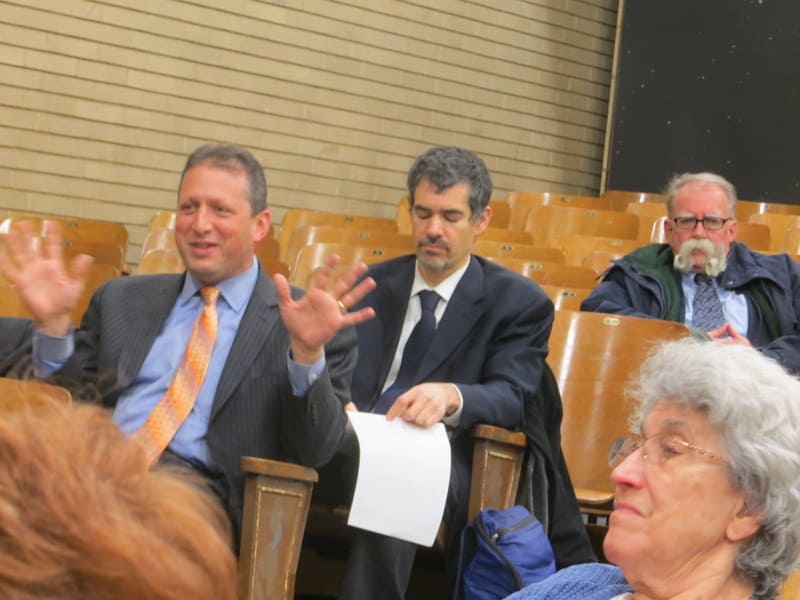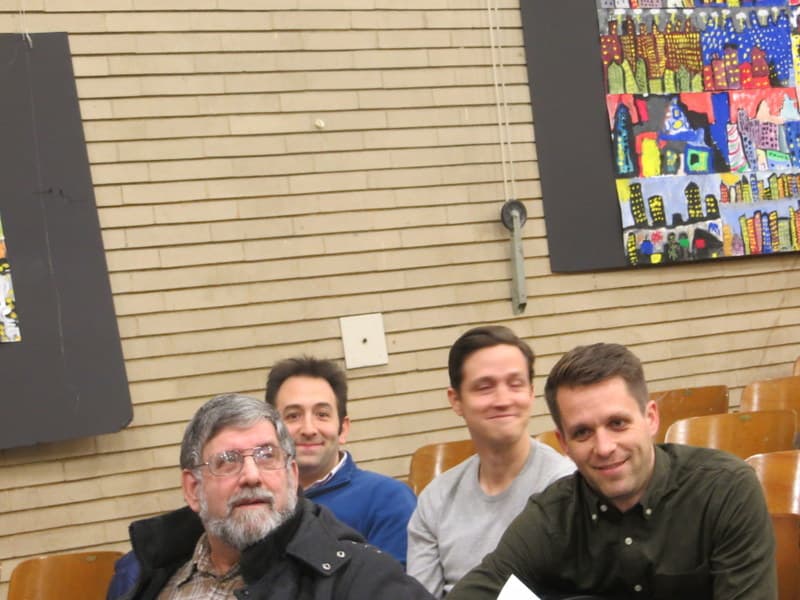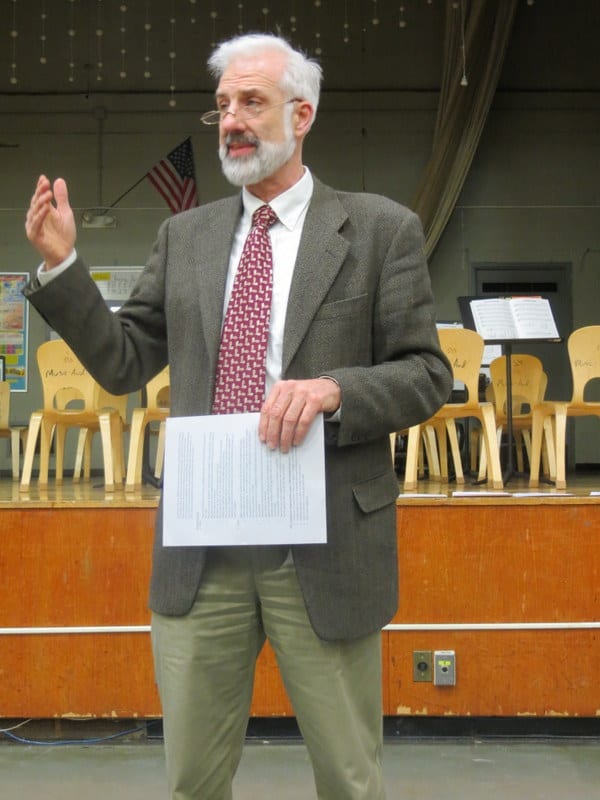A giant concrete tank, built underground to hold the raw sewage that currently gets pumped in the Gowanus Canal whenever it rains, has become the main focus of attention of the planners of the Gowanus Canal cleanup.

The long-polluted canal was cited as one of the most toxic sites in America and declared a Federal EPA Superfund site in 2009 with strong backing from Congresswoman Nydia Velazquez.
The Superfund designation was made despite opposition from the Bloomberg administration, including then local councilman Bill de Blasio. His belief was that the US government would only get in the way. He was quoted in the Daily News saying, “We’re being sold a bill of goods, there isn’t necessarily money attached. How can you call it Superfund if there’s no fund?”
The City administration claimed that some light dredging, improvements to the existing flushing tunnel, and planting trees around the canal was all that was needed. What was not said was that the administration was worried that Toll Brothers would cancel a big development project were the Superfund designation to take place. In addition, the city was afraid that Superfund would cost them a lot of money.
Velazquez and the community won, and Superfund work has proceeded on schedule. Toll Brothers did pull out. A new developer stepped right in, and is building an even bigger development. The city’s fear about expense were correct, as the EPA is demanding an end to its practice of dumping raw sewage into the canal.
The non-existent fund that de Blasio was referring to has always existed. Superfund cleanups – by law – are financed by the entities that are found to have been contributors to the pollution. In Gowanus, there are many firms that either did business along the canal or have acquired companies that once did. These entities are referred to as Potentially Responsible Parties (PRP).
National Grid is the largest PRP. This British company bought the Brooklyn Union Gas Company in 2007. They also bought these liabilities and is responsible for the lion’s share of the cleanup.

The canal has been found to have two main pollutants. One of them is toxic coal tar. Coal tar is a byproduct of the manufacturing of methane gas, which was the main product of Brooklyn Union Gas. Coal tar is a carcinogen, and remains in the ground. In Gowanus it has slowly seeped down and towards the canal. It has compromised both the canal and the ground water.
The second biggest pollutant is the raw sewage that has been dumped into the canal for many decades. NYC is responsible for the cleanup of sewage waste in the canal, as well as creating a system to prevent recontamination.
During heavy rainstorms, the local sewers overflow, because they were not designed to handle both sewage and the rain at the same time. To address this problem, cities all over the country have built large tanks to hold raw sewage until the rain stops and the sewers can do its normal job of porting the waste to a local treatment plant.
The EPA has ordered the city to build two retention tanks to prevent recontamination. The location of one of them has proved contentious ever since the EPA suggested placing it under the swimming pool at Thomas Greene Playground, near the public housing developments at the north end of Gowanus.
The park is nicknamed “Double D” park because it sits between Douglass and Degraw Street. Double D is one of 14 outdoor public swimming pools in Brooklyn. The city acquired the park in 1935. It was previously the site of a Manufactured Gas Plant (MGP) owned by Brooklyn Union.
In 2008, National Grid, under orders from NYS Department of Environmental Conservation, began digging under the park to see what toxins were left behind. They discovered a huge pool of coal tar under the swimming pool.
The EPA decided that the coal tar had to go, and thought it common sense to put a retention tank into an already dug hole, and then replace the swimming pool. Additionally, since the city already owned the land, there would be no land acquisition costs or delays.
But the city had other ideas. While they agreed that the park was a potential site, their preferred site was across the street from the park, closer to the canal. However, the city does not own this land and would have seize it from the owners using their power of eminent domain.
Last year, the city began a public relations campaign to convince key players that the EPA was wrong and they were right. The duo of Emily Lloyd and Mitchell Silver, Commissioners of NYC DEP and Parks, respectively, made the rounds of community groups, local politicians, the EPA and its associated watchdog group, the Gowanus CAG, with a PowerPoint presentation.

The city and the EPA have been in negotiations since last summer. The EPA is concerned about the cleanup schedule; the city is concerned with losing the park for an extended period. The mayor is on record as being against the entire Superfund project. This leads some to suspect the city of stalling as long as possible. But DEP Associate Commissioner Eric Landau has told the Star-Revue that the city is committed to the EPA’s schedule.
On January 19, the monthly CAG meeting was moved to the large PS 58 auditorium from its normal meetings space at St. Mary’s Star of the Sea senior home, expecting to make a big announcement about the settlement of the negotiations. Region Administrator Walter Mugdan traveled to Gowanus for the event.
Unfortunately, an agreement has not yet been reached, leaving Mugdan in the uncomfortable position of having to update the group on the sensitive discussions, without giving too much away. Both DEP’s Landau, and Councilman Brad Lander, as well as the regular CAG members, sat listening attentively.

Mugdan spoke for nearly an hour. He explained the city had considerations that the EPA is listening to. He believes that Parks Commissioner Silver, who was born near Prospect Park, is being absolutely sincere in his passion to restore Double D park as soon as possible. He even spoke of the possibility of rebuilding an even better pool.
“The City has made some valid points which cannot be casually dismissed,” said Mugdan.
One consideration is the necessity of building a “head house” – an above ground structure that enables easier and more efficient maintenance of the tank. Without a head house, DEP claims that the occasional cleaning of the tank would be more difficult, leaving foul odors in the neighborhood. The optimal location of such a structure is close to the tank, which would mean an impingement on the area of the park, the city claims it needs 25,000 square feet.
A latecomer to all this is the Alloy Group. Alloy is a real estate development company based in Dumbo, but looking to relocate to Gowanus. They have proposed a deal with the city where they would purchase the land across from the park, develop two thirds of it, and donate the rest to the city to use as parkland.
This proposal would more than replace land in the park that a head house would occupy. Two Alloy principals sat with DEP’s Landau, indicating that their proposal was still being considered. Alloy claims that the city could save as much as $100 million by not having to purchase the property.

There were two big takeaways from the meeting. The first is that no matter what agreement is finally reached, the EPA would require the city to develop plans for both sites. Mugdan explained that there were uncertainties in either case; he wants to have a fallback in case the agreed upon site hits a snag.
For example, at previous meetings, Christos Tsiamis, the EPA project leader in Gowanus, has expressed fears that digging close to the canal might endanger the integrity of the canal bulkhead.
The second takeaway is that the EPA has an agreement with the city about further maintenance of the canal. If the retention tank is not built in time, and the city has to continue flushing raw sewage into the canal after it is cleaned and capped, the city becomes responsible for the dredging of any new polluted areas.









One Comment
Very concerned about the final take away you reported: that city would be allowed to continue to pollute the canal AFTER the EPA cleanup if they can’t build their tank in time.
Why, oh why, given the city’s performance record when it comes to Gowanus, would the EPA even entertain the idea that the city could have endless time to get around to building their sewer tanks AND be allowed to pollute the canal following the cleanup work.
Looks like a recipe to let the DEP off the hook for doing anything.